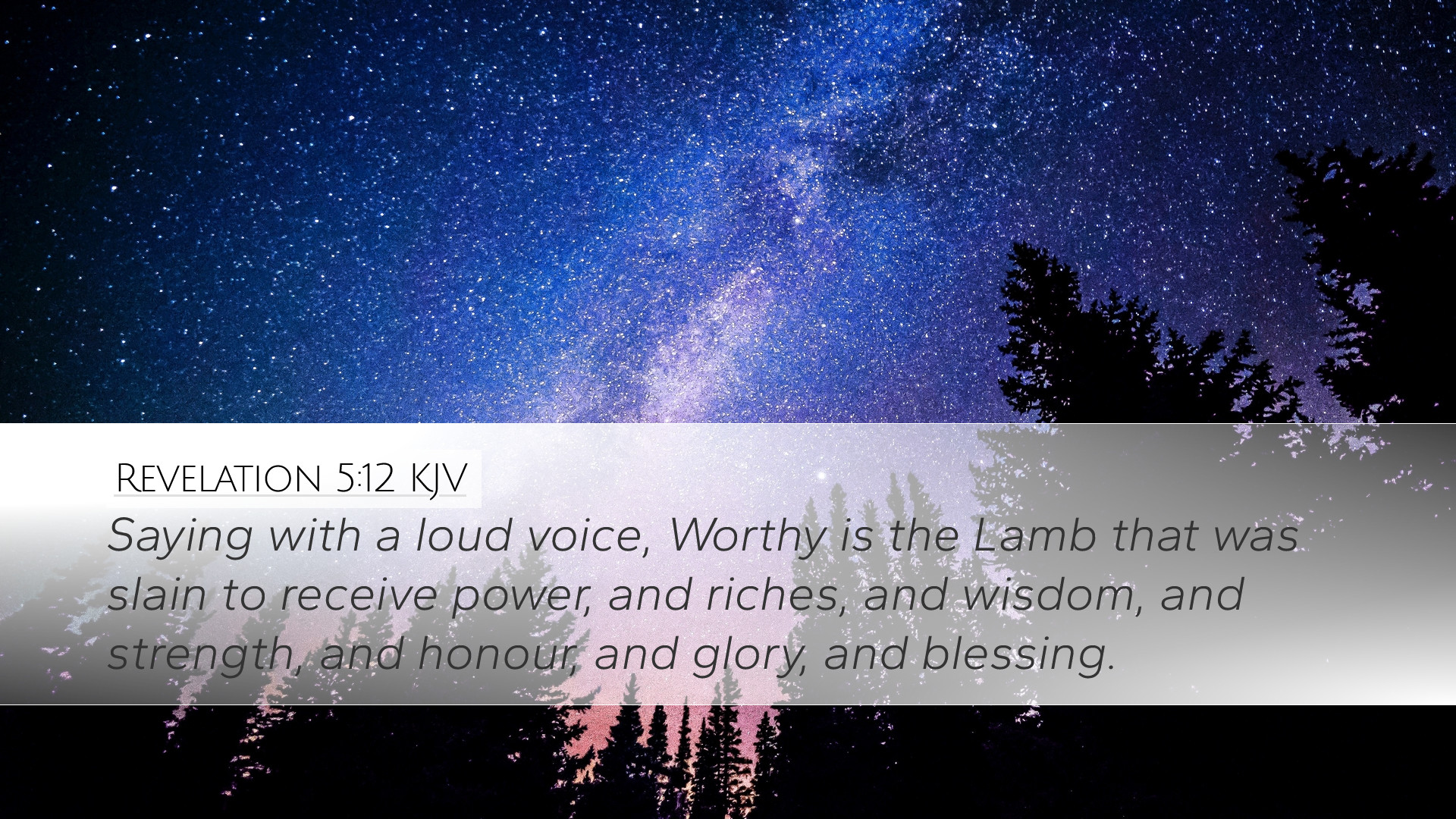Commentary on Revelation 5:12
Revelation 5:12: “Worthy is the Lamb that was slain to receive power, and riches, and wisdom, and strength, and honor, and glory, and blessing.”
Contextual Analysis
The setting of Revelation 5 is in the heavenly court, where John observes a scroll held by the One seated on the throne, and he is distressed as no one is found worthy to open it. The introduction of the Lamb, who was slain yet stands alive, brings dramatic significance to the scene.
Interpretation and Theological Insights
- Matthew Henry's Commentary:
Henry emphasizes the worthiness of the Lamb, stating that His sacrificial death is the foundation of all salvation. Christ being slain not only signifies His suffering but also His victory over death and sin, thus rendering Him worthy of all praise and honor in heaven.
- Albert Barnes' Commentary:
Barnes expounds upon the seven attributes ascribed to the Lamb. Each attribute reflects the completeness of His divine character and authority. The repetition of these attributes conveys the fullness of Christ's glory and the reverence He is due as the Redeemer of mankind.
- Adam Clarke's Commentary:
Clarke discusses the significance of the phrases used in this verse. Each term represents different aspects of God’s sovereignty and the worthiness of Christ to receive worship. The Lamb's worthiness is highlighted as He fulfills the expectations of both the law and the prophets.
Exegesis of Key Terms
- “Worthy”:
This term denotes the idea of being deserving of something due to one's merits. In the context of salvation history, it underscores Christ's unique role as the Savior.
- “Lamb”:
The imagery of the Lamb is deeply rooted in the Old Testament sacrificial system. It represents both innocence and the atoning sacrifice of Christ, establishing Him as the profound fulfillment of the Passover.
- “Power, riches, wisdom, strength, honor, glory, and blessing”:
These seven expressions denote the totality of divine attributes. They reclaim the supremacy of Christ’s position and are not merely descriptive but serve as ascriptions of His authority and magnificence.
Liturgical Application
This verse serves as a pivotal reminder within Christian worship. It affirms the centrality of Christ in liturgical settings, calling believers to acknowledge and proclaim His worthiness in music, prayers, and proclamations. The congregational affirmation of Christ's worthiness encapsulates the essence of worship, urging a response of reverence and adoration.
The Role of Worship in the Church
The multiplicity of attributes acknowledged in Revelation 5:12 invites a holistic view of worship within the church. Each service encompasses elements that reflect power, wisdom, and glory, calling believers to not just observe but actively engage in worshipful responses to God’s nature.
Conclusion
The depth of Revelation 5:12 serves as both a theological foundation and a practical guide for believers. The acknowledgment of Christ’s worthiness extends beyond mere textual analysis into the realm of lived theology. Pastors, students, and scholars alike are tasked with dissecting these profound truths and communicating them within their respective communities.


